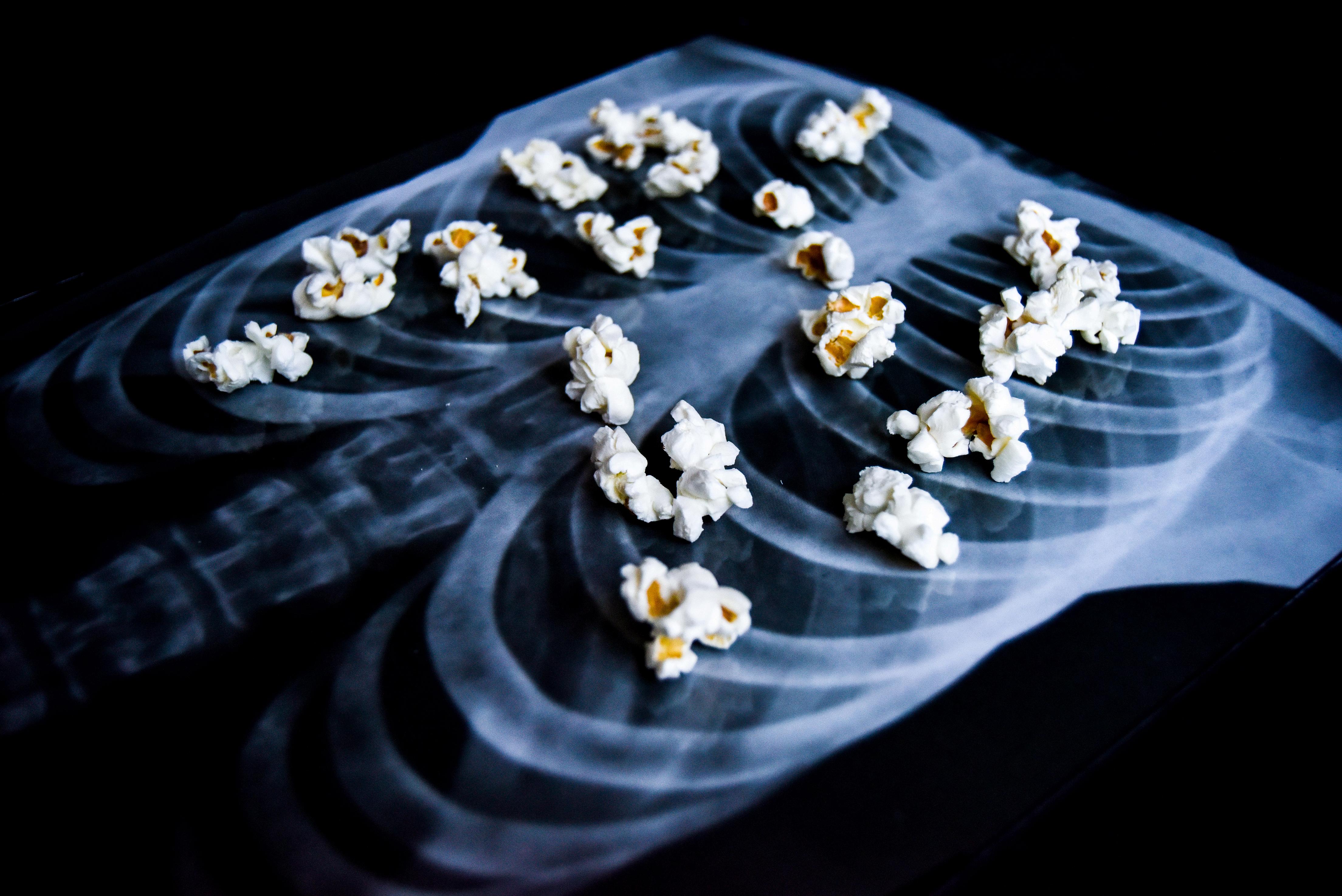
3 minute read
POPCORN LUNG AND DIVING MEDICINE
Popcorn Lung and Diving: What Every Diver Should Know!
Text by Dr Frans J Cronjé
By the DAN Southern Africa Medical Team
You may have heard of “popcorn lung” in the news—an oddly named condition with serious implications, especially for divers. Officially called bronchiolitis obliterans, popcorn lung is a rare but irreversible disease that scars the tiniest airways in the lungs. For those who rely on optimal pulmonary function, like scuba divers, this isn’t just a concern—it’s a potential dive-ending diagnosis.
The Name Behind the Damage
The nickname “popcorn lung” comes from cases in the early 2000s, when workers in microwave popcorn factories developed lung disease after inhaling diacetyl, a chemical used to give popcorn its buttery flavour. Diacetyl, when aerosolized and inhaled, triggers intense inflammation in the bronchioles—the smallest branches of the lungs. Over time, this leads to permanent narrowing and obstruction, reducing airflow and causing symptoms like coughing, wheezing, shortness of breath, and fatigue.
Vaping and Chemical Inhalation
What does this have to do with diving? Vaping. Many e-cigarette products contain diacetyl or similar compounds. When heated, these chemicals can degrade into even more harmful byproducts. While the flavourings in vapes may be food-safe when swallowed, inhalation is another story. Unlike digestion, inhalation sends chemicals straight into the lungs and bloodstream, bypassing the liver’s protective filtering.
This direct exposure increases the risk of injury to the delicate pulmonary structures divers rely on for gas exchange. Once damage occurs, it’s usually permanent. Treatments exist only to manage symptoms—there is no cure.
The Diving Danger
Diving with bronchiolitis obliterans is highly risky. The scarring in the bronchioles can trap air, increasing the chance of air embolism or pulmonary barotrauma during ascent. Even in mild cases, reduced lung elasticity and small airway dysfunction can impair exercise tolerance and increase the risk of shallow water blackout or decompression stress due to poor gas exchange.
Furthermore, subclinical lung injury from vaping may go undetected until it’s too late. A diver might pass basic spirometry but still suffer from air trapping or ventilation-perfusion mismatch under pressure.
Teen Vapers and Long-Term Risks
In one recent case, a U.S. teen developed popcorn lung after secretly vaping for three years. Her case echoes the 2019 outbreak of EVALI (e-cigarette or vaping product use–associated lung injury), linked to vitamin E acetate in cannabis vape products. Many of these injuries involved toxic gases like ketene, produced when additives are heated—gases never meant for the human lung, let alone a diver’s.
The problem is compounded by the variety of untested chemicals in flavored vapes—over 180 are used, many forming unknown compounds when heated. Substitutes for diacetyl, such as acetoin or 2,3-pentanedione, may be just as harmful.
Takeaway for Divers
If you vape, especially flavoured products, you may be exposing your lungs to irreversible harm. For divers, even subtle changes in airway function can spell the difference between a safe dive and a serious incident.
DAN recommends that divers avoid vaping altogether. Lung health is non-negotiable in diving. Protect your future dives by protecting your lungs today.










